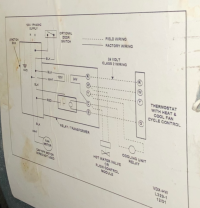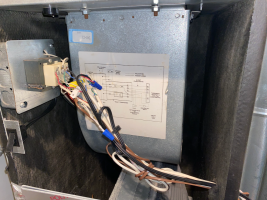Researcher2
New Member
I have a hydronic system with a single zone valve with an air handler in a condo. The 2004 / original actuator head (TACO model ESP075c2-2) wouldn’t close all the way. I spoke with TACO support and they said this is common and the capacitor fails over time and can no longer close.
They no longer make this model, but the replacement is TACO model Z075C2-2. I ordered this unit back in May and it opens and closes all the way.
Unfortunately, the transformer or relay (inside our air handler) makes a clicking sound with the new model when charging the actuator to open the valve. It doesn’t matter if the actuator is on or off the ball valve or hanging in my hand. In other words it is not a friction issue with the ball valve
When I hook up the old unit the clicking sound goes away.
I have been working with TACO support for several weeks. They suggested I add 1000 ohm / .5 watt resistor see picture. This didn’t stop the clicking noise.
Now TACO support is suggesting “If you tried the resistor and the relay is still clicking you may have to wire in a separate transformer to power the zone valve.”
I have tried contacting all of the HVAC companies near me and none of them work on hydronic systems. Just forced air. And I have a feeling that this might also not work.
Does anyone have experience with this? Or have any ideas on how best to resolve?
They no longer make this model, but the replacement is TACO model Z075C2-2. I ordered this unit back in May and it opens and closes all the way.
Unfortunately, the transformer or relay (inside our air handler) makes a clicking sound with the new model when charging the actuator to open the valve. It doesn’t matter if the actuator is on or off the ball valve or hanging in my hand. In other words it is not a friction issue with the ball valve
When I hook up the old unit the clicking sound goes away.
I have been working with TACO support for several weeks. They suggested I add 1000 ohm / .5 watt resistor see picture. This didn’t stop the clicking noise.
Now TACO support is suggesting “If you tried the resistor and the relay is still clicking you may have to wire in a separate transformer to power the zone valve.”
I have tried contacting all of the HVAC companies near me and none of them work on hydronic systems. Just forced air. And I have a feeling that this might also not work.
Does anyone have experience with this? Or have any ideas on how best to resolve?





